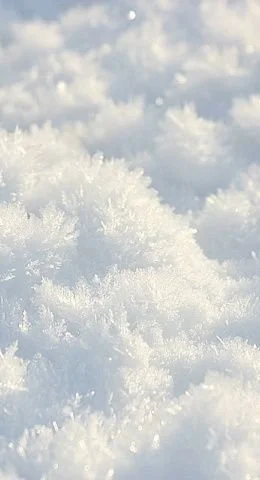The Secret Sparkle of Snow: What Makes Snow Twinkle?
When the first light of dawn kisses a blanket of freshly fallen snow, a quiet magic unfolds. The world transforms, shimmering as if dusted with stardust. Snowfields glitter, their brilliance like winter herself has scattered her secret jewels across the earth. But what is it about snow that makes it sparkle so enchantingly, like a thousand diamonds glistening beneath our feet?
The Science of Snow’s Sparkle: Nature’s Hidden Gemstones
Snow may appear soft and delicate, but it’s actually a collection of countless ice crystals, each one uniquely formed as it tumbles from the sky (you can read more about it in our article The Singular Symphony: Unraveling the Mystique of Snowflakes). These crystals, with their sharp angles and intricate geometries, act like tiny mirrors. When sunlight hits the surface of freshly fallen snow, it doesn’t simply absorb into a uniform white sheet. Instead, the light bounces off the facets of these ice crystals, scattering in all directions. This scattering effect, known as diffuse reflection, creates that magical sparkle that dances across snowbanks, turning a humble field into a glittering expanse.
But it’s not just the light that makes snow sparkle—it’s the unique structure of snowflakes themselves. Each flake, with its six-sided symmetry, captures and reflects light differently. As the sun’s rays pierce through these crystalline forms, the snow takes on an ethereal glow, shimmering as if the ground itself is alive with light. It’s the same phenomenon that makes diamonds glitter, only here, it’s nature’s very own winter jewels on display.
Photo: We always aim to credit photos; if this one needs crediting or removal, please contact us with the source.
Why Some Snow Sparkles More Than Others
Not every snowfall will dazzle with the same intensity. The conditions need to be just right to create that breathtaking glitter effect. For snow to sparkle like glitter, it must be fresh, with temperatures cold enough to keep each flake’s crystalline structure intact. Snow that falls under clear, cold skies often sparkles more brightly because the flakes have had time to form intricate shapes high in the atmosphere, away from the dampening effects of clouds and warmer air.
The magic truly happens when the sun breaks through on a clear, cold day. As it climbs higher in the sky, its light strikes the snow at different angles, causing the tiny crystals to catch the rays and reflect them like minuscule prisms. Early morning and late afternoon, when the sun is lower in the sky, are often the best times to witness this glittering display, as the slanting light enhances the sparkle.
The Enchantment of Moonlit Snow: A Celestial Dance
The glitter of snow isn’t confined to the sunlit hours. On clear, frosty nights, moonlight can create an equally mesmerizing effect. The softer, cooler light of the moon lends a silvery sheen to the snow, turning it into a dreamlike landscape that feels almost otherworldly. As the moon’s rays dance across the snow, it appears to twinkle softly, like a field of stars that have fallen to Earth. It’s as if the universe has woven a tapestry of light, connecting the heavens above with the frost-covered earth below.
For those who venture into the quiet of a moonlit winter’s night, this sparkling snow becomes a companion, lighting the path and transforming even the most familiar landscapes into places of wonder and mystery.
Photo: We always aim to credit photos; if this one needs crediting or removal, please contact us with the source.
Capturing the Magic: Turning Science Into a Winter Ritual
Understanding the science behind snow’s sparkle doesn’t diminish its magic; rather, it deepens our appreciation of this fleeting winter beauty. Invite your readers to step outside on a bright winter morning or during a full moon and witness the glittering snow for themselves. Encourage them to pause, take a deep breath of the crisp, cold air, and let themselves be captivated by this small miracle of nature.
To fully experience the enchantment, they might take a walk in a snow-covered park, or simply gaze out their window with a warm cup of cocoa in hand, marveling at how light can turn the simplest of elements into something breathtakingly beautiful. Perhaps they can share this moment with a child, passing on the wonder of nature’s sparkle as a cherished winter memory.
By blending the science behind the glittering snow with rich, lyrical descriptions, you create an article that not only informs but also enchants, turning the seemingly ordinary into a magical experience your readers will cherish.
Related Reads You’ll Love




























A simple, faith-rooted guide to nourishing your body and hormones in the cold months. Warm foods, essential minerals, sunlight, grounding, and winter rhythms that support women naturally — all aligned with God’s design for rest, strength, and nourishment in this season.